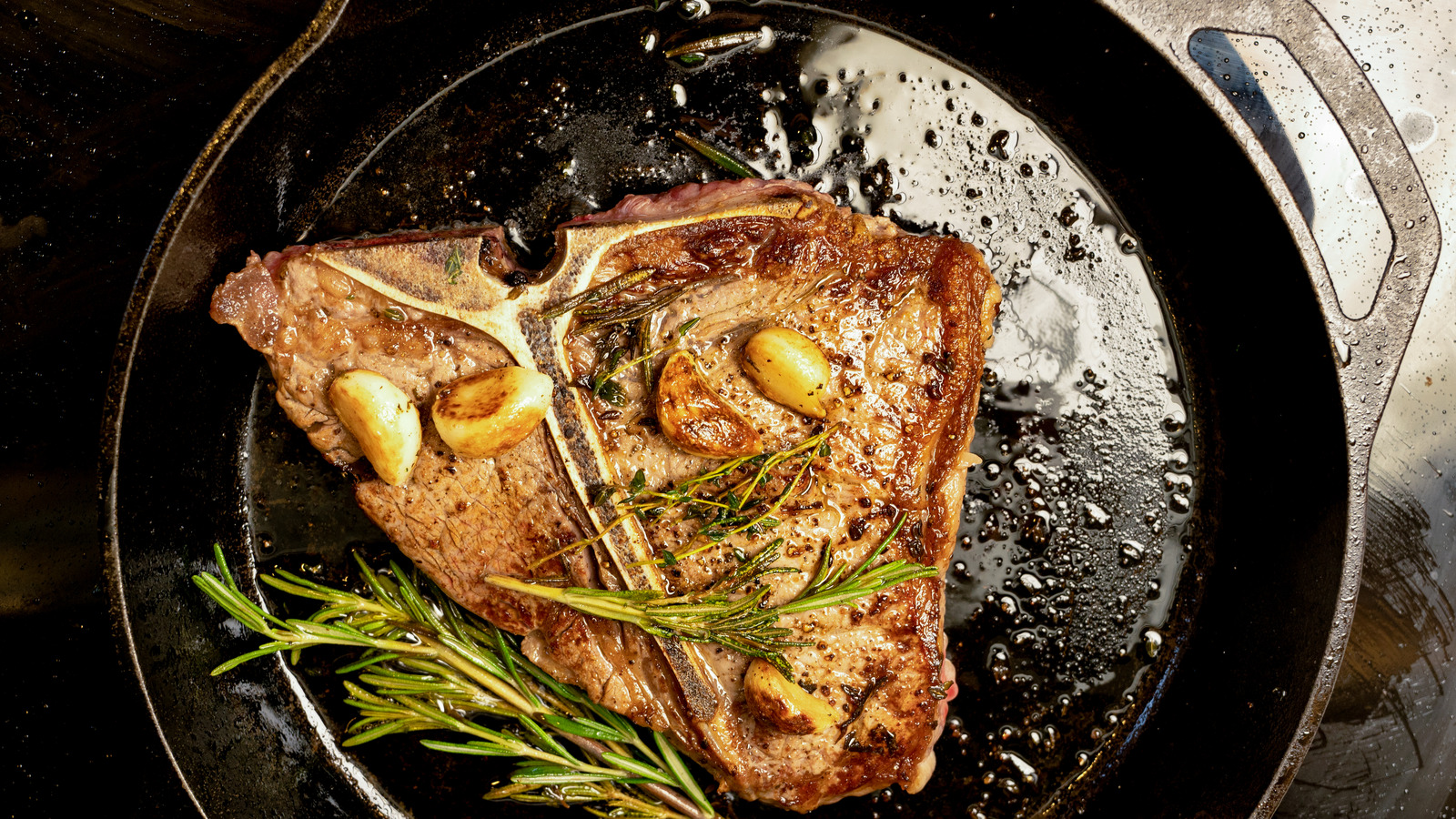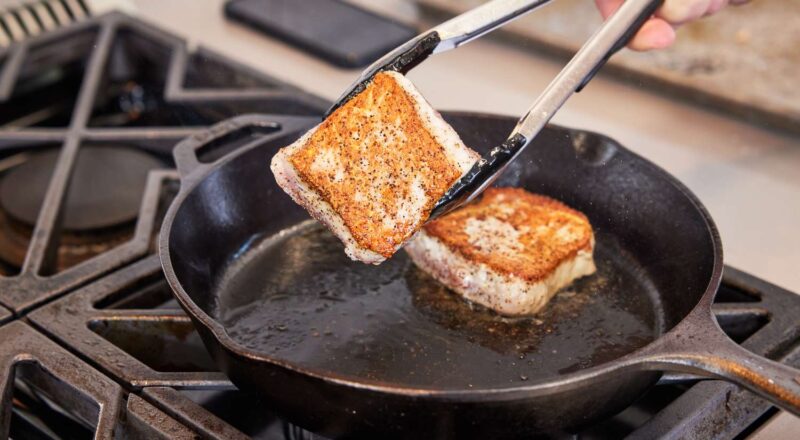A cast iron skillet is a kitchen staple cherished by professional chefs and home cooks alike. Its ability to evenly distribute heat and add incredible flavor makes it a must-have. But what happens when food is caked on, and cleaning becomes a daunting task? We’ll address how to clean a caked on cast iron skillet with strategies that are effortless and effective.
Cleaning a caked-on cast iron skillet can seem intimidating, but with the right techniques, it can be easily managed. Let’s dive into some terrific tips to restore your skillet to its prime condition.

Understanding Your Cast Iron Skillet
Before we dive into the actual cleaning steps, it’s crucial to understand the nature of your cast iron skillet. Cast iron skillets are durable, but their longevity depends on proper care and maintenance. Understanding what makes cast iron special can help in devising the best cleaning strategy.
The Special Construction of Cast Iron
Cast iron skillets have a unique construction that allows them to conduct heat evenly. This property, combined with their non-stick qualities when seasoned correctly, makes them a favorite in the kitchen. However, these very features can present challenges when food gets caked on.
More information about the special construction can be found on How to Repair a Cast Iron Skillet

Initial Steps to Take Before Cleaning
When dealing with a caked-on cast iron skillet, the initial steps are crucial. These steps prepare the skillet for deeper cleaning without damaging its surface or removing its seasoned layer.
Cooling Down
Allow the skillet to cool down before you start cleaning. Cleaning a hot skillet can cause thermal shock, which may crack the iron.
Scraping Off Excess Food
Use a wooden spatula to scrape off excess food. Avoid using metal tools as they can damage the skillet’s surface. More about techniques for this can be learned from How To Clean Greasy Cast Iron Skillet

Primary Cleaning Techniques
There are several effective methods for tackling caked-on food. These methods range from using simple household items to more specialized tools and products designed for cast iron care.
Using Hot Water
Rinse the skillet with hot water. The heat helps to soften the caked-on food, making it easier to remove. Use a non-abrasive cloth or sponge to scrub the surface gently.
Salt Scrub Technique
Salt is an excellent abrasive that can help remove caked-on food without damaging the skillet. Pour a generous amount of coarse salt into the skillet and scrub with a cloth or sponge.
Baking Soda Paste
Creating a paste with baking soda and water can also be effective. Apply the paste to the affected areas and let it sit for a few minutes before scrubbing.
Advanced Techniques for Stubborn Stains
If the primary techniques do not work, there are more advanced methods to consider. These techniques are often necessary for more severe caked-on food and staining.
Boiling Water Method
Fill the skillet with water and bring it to a boil. The boiling water helps to loosen the caked-on food, making it easier to scrub off.
Vinegar Soak
For particularly stubborn stains, a vinegar soak can be very effective. Mix equal parts of water and vinegar and let the skillet soak for an hour before scrubbing.
Commercial Cleaning Products
There are many commercial products specifically designed for cleaning cast iron. These products can offer a more robust cleaning solution when traditional methods fail.
Electrolysis Method
Though it sounds complex, the electrolysis method is a sophisticated way to clean heavily rusted or caked-on skillets. It involves using electricity to remove rust and residue. This method should be used with caution and proper understanding.
Seasoning Your Skillet After Cleaning
After cleaning, it is essential to season your skillet to restore its non-stick surface and prevent rust.
How to Season Your Cast Iron Skillet
Seasoning involves applying a thin layer of oil to the skillet and heating it to a specific temperature. This process polymerizes the oil, creating a durable, non-stick coating on the skillet’s surface.
Choosing the Right Oil
Vegetable oil, flaxseed oil, and canola oil are popular choices for seasoning. Each oil has its pros and cons, but vegetable oil is a great all-rounder for most people.
Applying and Heating
Apply a thin layer of oil to the entire surface of the skillet. Place the skillet upside-down in an oven preheated to 375F (190C) and bake for an hour. Place a baking sheet or foil on the lower rack to catch any drips.
Maintenance Tips for Cast Iron Skillets
To keep your cast iron skillet in top shape, incorporate these regular maintenance tips into your routine.
Regular Cleaning
Regularly clean your skillet using the gentle methods described above. Avoid using soap or harsh chemicals, as they can strip the seasoning.
Storing Your Skillet
Store your cast iron skillet in a dry place to prevent rust. Place a paper towel between the skillet and the lid, if using one, to allow air circulation.
Handling Rust
If your skillet develops rust, use a rust eraser or fine steel wool to remove it. Follow up with a thorough cleaning and seasoning.
Monitoring the Seasoning
Regularly check the skillet’s surface for damage or wear in the seasoning. If necessary, re-season the skillet to maintain its non-stick surface.
Common Mistakes to Avoid When Cleaning Cast Iron
Even with the best intentions, mistakes happen. Here are some common mistakes to avoid when cleaning your caked-on cast iron skillet.
Using Dish Soap
While dish soap can remove some grime, it’s not ideal for cast iron as it can strip the seasoning.
Soaking the Skillet
Never soak your cast iron skillet in water for an extended period. Prolonged exposure to water can cause rust.
Using Metal Tools
Metal tools can scratch and damage the skillet’s surface, removing the seasoning and potentially causing rust.
How to Avoid Caking on Food
Prevention is always better than cure. Here are some tips to prevent food from caking onto your cast iron skillet in the first place.
Preheating the Skillet
Always preheat your cast iron skillet before adding food. A hot skillet helps to create a natural barrier between the food and the skillet surface.
Using Enough Oil
Ensure you are using enough oil when cooking. A lack of oil can cause food to stick and cake onto the skillet.
Cooking at the Right Temperature
Avoid cooking at extremely high temperatures, as this can cause food to burn and cake onto the skillet.
The Environmental Impact of Cleaning Cast Iron
Cleaning and maintaining a cast iron skillet is not only beneficial for your cooking but also environmentally friendly. A well-maintained skillet can last for generations, reducing the need for replacements and minimizing waste.
Sustainability
By investing time in the proper care and maintenance of your cast iron skillet, you are promoting sustainability. A single skillet, when cared for properly, can serve multiple generations, thereby minimizing the environmental impact of cookware manufacturing and disposal.
Energy Efficiency
Maintaining your skillet’s surface through regular seasoning ensures even heat distribution, which can lead to energy-efficient cooking.
FAQ
What is the best way to clean a caked-on cast iron skillet?
Using hot water and a non-abrasive cloth, followed by a salt scrub or baking soda paste, are effective methods. For stubborn stains, consider using the boiling water method or vinegar soak.
Can I use soap to clean my cast iron skillet?
It’s generally not recommended to use soap on a cast iron skillet as it can strip the seasoned surface. Instead, use salt or baking soda as natural abrasives.
How often should I season my cast iron skillet?
Season your skillet after every few uses or whenever you notice food sticking to the surface. Regular seasoning helps maintain the skillet’s non-stick properties and prevent rust.
As an Amazon Associate, I earn from qualifying purchases.
Check out these use tilt skillet and simple cleaning steps for more tips.

